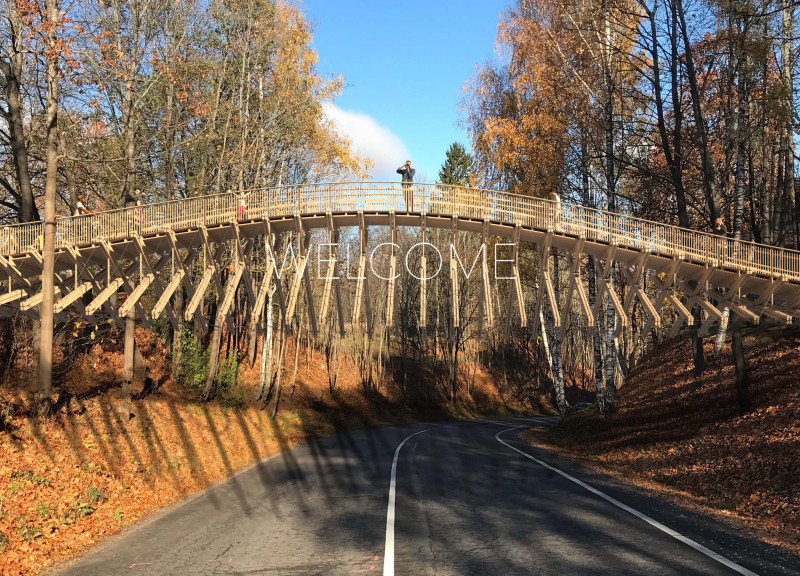5 key facts about this project
The architectural design explores the connection between human-made structures and natural landscapes, situated in Gauja National Park, Latvia. Serving as a bridge, it facilitates movement from the urban environment into a serene natural setting. The concept focuses on creating a harmonious interaction with the surroundings, reflecting local traditions and an awareness of sustainability.
Structural Configuration
A three-dimensional framework defines the bridge, showcasing multiple "X-shape" three-string trusses. This arrangement not only enhances its visual appeal but also contributes to the stability of the overall structure. The transverse section consists of two compression bars and one tension bar, allowing for effective load distribution. This thoughtful arrangement supports the integrity of the design while keeping the structure light and functional.
Material Selection
Timber is a key material in the design, consistent with Latvia’s long history of timber construction. This choice underscores a commitment to sustainable practices and a connection to the local environment. The natural qualities of timber provide flexibility and strength, enabling the bridge to adapt to varying environmental conditions.
User Experience
As a threshold between the city and nature, the bridge enriches the experience of crossing from one realm to another. Its design recalls the movement of butterfly wings in flight, emphasizing a sense of fluidity. This dynamic quality invites users to engage deeply with their surroundings, transforming an ordinary crossing into an opportunity for reflection.
Technical Resilience
Anti-parabolic inhaul cables connect the trusses along the length of the bridge, reinforcing the structure and ensuring it can handle different load situations. This integration also facilitates maintenance, allowing for easy replacement or updating of parts, much like changing the strings of a musical instrument.
The bridge stands as a vital link between urban life and the expansive natural landscape. Its delicate structural elements harmonize with the forest, creating a space where nature and design interact thoughtfully.



























